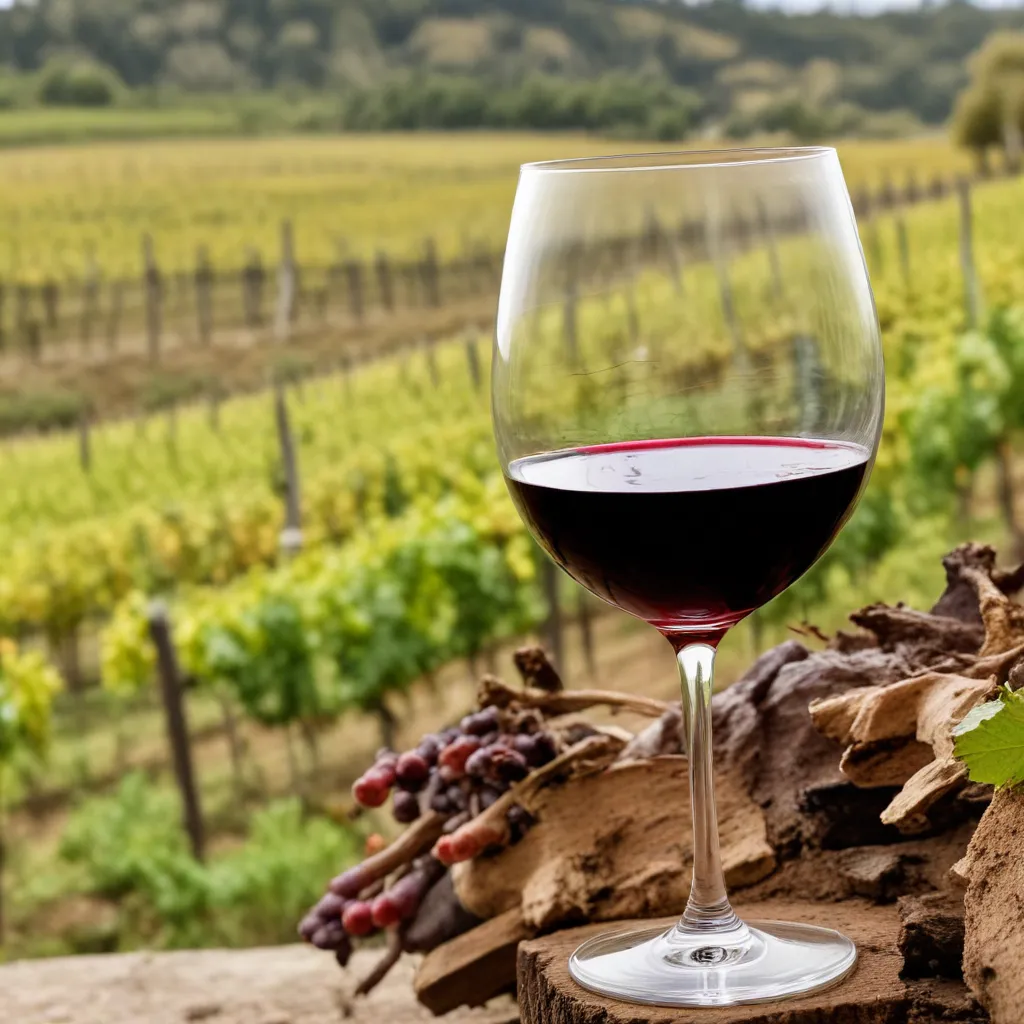
As a hospitality and wine expert, I’m often asked to explain the science behind why a glass of wine tastes the way it does. The answer lies in the complex interplay between a wine’s chemical composition, known as its chemical terroir, and our human sensory perception, or sensorial terroir.
Chemical terroir refers to the unique matrix of compounds that give each wine its distinct aroma, flavor, and mouthfeel. From phenolics that contribute color and bitterness, to anthocyanins that lend red hues, to terpenoids that impart floral and fruity notes, the chemical makeup of a wine is a reflection of its origins. Factors like grape variety, soil acidity, climate, and winemaking techniques all shape this intricate chemical terroir.
On the other hand, sensorial terroir involves how our senses, from sight to smell to taste, interpret these chemical components. Our visual perceptions, like observing a wine’s “tears” or color, provide the first clues about a wine’s character. Then, our olfactory system detects a symphony of aromas, from delicate floral notes to bold, spicy bouquets. Finally, our taste buds and tactile receptors on the tongue and in the mouth discern a wine’s acidity, tannins, sweetness, and overall mouthfeel.
The fascinating intersection of chemical and sensorial terroirs is what makes each wine experience highly personal and subjective. As Chinese author and Master of Wine Gus Zhu explains, “The same glass of wine is perceived in different ways by different people.” This is where the language of wine becomes a crucial tool for communicating our individual impressions.
The Evolving Language of Wine
Historically, wine discourse has relied heavily on metaphor and analogy, with tasting notes often evoking images of “roasted meats,” “Asian spices,” or a wine’s “muscular” structure. This Eurocentric, descriptive approach, sometimes dubbed “Wineglish,” has become the dominant lexicon, exported globally and translated into many languages.
However, this formal vocabulary can pose challenges, particularly for those without direct experience of the referenced flavors and aromas. As wine educator Regine Rousseau notes, “When we ask, ‘What are you tasting in this glass?’, it can sometimes feel like a test.” The emphasis on finished product over origins and process, as well as the use of numeric scores, can also make the wine experience seem more objective than subjective.
Recognizing these limitations, many in the industry are exploring alternative ways to communicate about wine. Wine writer Jeannie Cho Lee MW suggests that Chinese and other Asian tasters look to their own rich culinary traditions for more relatable sensory references, such as “char siu” instead of “bacon” or “egg tart” instead of “English biscuits.”
Others are experimenting with more personalized, experiential descriptions that eschew the traditional tasting note format. Meg Maker, a wine writer with a background in fine art, has begun creating long-form, hand-illustrated visual narratives that “mingle text and illustration” to convey the emotional and cultural resonance of a wine.
The goal is to make wine discourse more diverse, inclusive, and accessible – to “valorize more diverse and personalized approaches” that resonate with a global audience. After all, as wine economist Kevin Capehart’s research has shown, the words used to describe a wine can have tangible financial consequences, influencing consumer perceptions and even pricing.
Terroir and the Language of Place
The language of wine is inextricably linked to the concept of terroir – the complex interplay of geography, climate, and human intervention that gives a wine its distinctive character. By understanding the terroir of a region, we can better appreciate the nuances that shape a wine’s aroma, flavor, and mouthfeel.
Take, for example, the Willamette Valley in Oregon, where I live. The region’s cool, maritime climate, volcanic soils, and skilled viticulture produce Pinot Noir wines with a delicate balance of red fruit, earthy undertones, and vibrant acidity. Contrast this with the bold, concentrated Cabernet Sauvignons of Napa Valley, where the warmer microclimate, alluvial soils, and refined winemaking techniques result in a very different sensory experience.
Exploring the language of terroir can also help bridge cultural divides. As Zimbabwean sommelier Tinashe Nyamudoka observed, the flavors he associates with Pinot Noir – the “hute” or water berry – are vastly different from the “red cherry” or “strawberry” descriptors common in the West. By understanding these regional distinctions, we can expand our wine vocabulary and foster a more inclusive, global dialogue.
Cultivating a New Wine Lexicon
As the wine industry evolves, so too must the ways in which we communicate about it. By embracing a more diverse, personalized approach to wine language, we can create a more welcoming and engaging experience for consumers, from seasoned enthusiasts to curious newcomers.
This might involve incorporating sensory metaphors rooted in local cuisines and cultural references. It could mean eschewing numeric scores in favor of evocative, experiential descriptions that capture a wine’s provenance and character. Or it might simply mean being more mindful of the language we use, recognizing that our words can shape perceptions and have very real economic consequences.
Ultimately, the goal is to move beyond the exclusive, Eurocentric lexicon that has long dominated wine discourse and to cultivate a new, inclusive language that celebrates the diversity of global wine production and consumption. By doing so, we can foster a deeper, more meaningful connection between people and the wines they love.
So the next time you pour a glass, take a moment to consider the remarkable alchemy of chemical and sensorial terroirs that have come together to grace your palate. And then, with an open mind and a creative spirit, see what words you can find to share that unique experience with the world.
